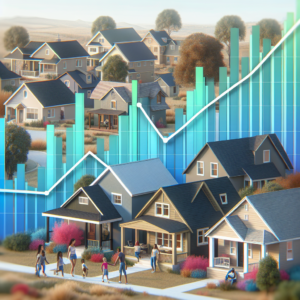
As the commercial property market navigates the complexities of a post-pandemic world, significant shifts are reshaping the landscape of property sales. In 2023, stakeholders are witnessing a confluence of factors that are not only altering buyer preferences but also redefining the valuation and utilization of commercial spaces. This article delves into the current trends, the impact of remote work, technological advancements, sustainability initiatives, and future predictions for the commercial property sector.
Understanding the Current Landscape of Commercial Property Sales in 2023
The commercial property sales landscape in 2023 is characterized by a dynamic interplay of economic recovery, changing consumer behaviors, and evolving business models. Following the disruptions caused by the COVID-19 pandemic, many investors are reassessing their strategies, leading to a more cautious yet opportunistic approach in the market. The demand for commercial properties is gradually rebounding, particularly in sectors such as logistics and warehousing, which have seen a surge due to the rise of e-commerce. Conversely, traditional retail spaces and office buildings are facing challenges as businesses adapt to hybrid work models and shifting consumer preferences. Overall, the market is marked by a heightened focus on flexibility, adaptability, and long-term viability.
Key Factors Driving Change in the Commercial Real Estate Market Today
Several key factors are driving change in the commercial real estate market today. Economic indicators, such as interest rates and inflation, play a critical role in shaping investor sentiment and financing options. Additionally, demographic shifts, including urbanization and an aging population, are influencing the types of properties in demand. The rise of technology-driven businesses has also led to increased interest in flexible workspaces and co-working environments. Furthermore, geopolitical factors and regulatory changes are prompting investors to rethink their portfolios, leading to a diversification of asset classes. As a result, the commercial property market is becoming increasingly segmented, with distinct trends emerging across various sectors.
The Impact of Remote Work on Office Space Demand and Valuation Trends
The shift towards remote work has had a profound impact on the demand for office space, fundamentally altering valuation trends in the commercial property market. Many companies are reevaluating their office needs, leading to a decrease in demand for traditional office spaces. In 2023, hybrid work models are becoming the norm, prompting businesses to seek flexible leasing arrangements and smaller office footprints. This trend has resulted in a reconfiguration of office layouts, with an emphasis on collaborative spaces rather than individual workstations. Consequently, properties that can accommodate these new requirements are seeing increased interest, while traditional office buildings are experiencing downward pressure on valuations. Investors are now prioritizing properties that offer adaptability and align with the evolving needs of tenants.
Emerging Technologies Transforming the Commercial Property Sales Process
The commercial property sales process is undergoing a transformation driven by emerging technologies. Innovations such as virtual reality (VR), artificial intelligence (AI), and blockchain are reshaping how properties are marketed, sold, and managed. VR technology allows potential buyers to conduct virtual tours of properties, enhancing the viewing experience and reducing the need for physical visits. AI is being utilized to analyze market trends, assess property values, and streamline the due diligence process, enabling investors to make more informed decisions. Additionally, blockchain technology is facilitating secure and transparent transactions, reducing the risk of fraud and improving efficiency in property transfers. As these technologies continue to evolve, they are expected to play an increasingly pivotal role in the commercial property sales landscape.
Sustainability and Green Building Trends Influencing Buyer Preferences
Sustainability has emerged as a critical factor influencing buyer preferences in the commercial property market. As awareness of climate change and environmental issues grows, investors are increasingly seeking properties that adhere to green building standards and sustainability practices. Features such as energy-efficient systems, sustainable materials, and certifications like LEED (Leadership in Energy and Environmental Design) are becoming essential criteria for buyers. In 2023, properties that prioritize sustainability are not only attracting higher demand but also commanding premium prices. This trend reflects a broader societal shift towards responsible investing and corporate social responsibility, as stakeholders recognize the long-term benefits of sustainable practices in enhancing property value and reducing operational costs.
Future Outlook: Predictions for Commercial Property Sales in the Next Decade
Looking ahead, the future of commercial property sales over the next decade is likely to be shaped by continued evolution in work patterns, technological advancements, and sustainability initiatives. As remote and hybrid work models become entrenched, the demand for flexible office spaces is expected to persist, while traditional office properties may need to adapt to remain competitive. The integration of technology in property management and sales processes will likely accelerate, enhancing efficiency and transparency. Additionally, sustainability will remain a key driver of buyer preferences, with green buildings becoming the standard rather than the exception. Overall, the commercial property market is poised for transformation, with opportunities for innovation and growth as stakeholders navigate the challenges and possibilities of the future.
In conclusion, the commercial property sales landscape in 2023 is marked by significant shifts driven by various factors, including the impact of remote work, technological advancements, and sustainability trends. As the market continues to evolve, stakeholders must remain agile and responsive to these changes to capitalize on emerging opportunities. The next decade promises to bring further transformation, with the potential for new business models and innovative approaches to property sales that will redefine the commercial real estate sector.




























